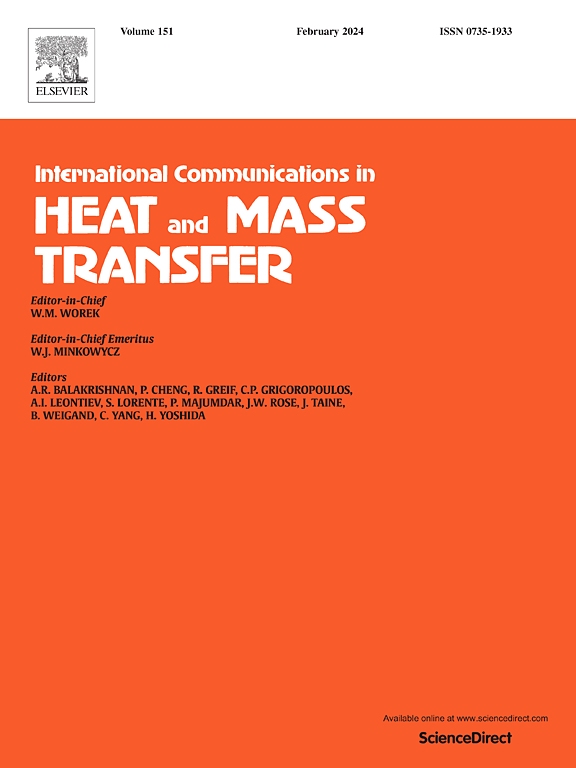Heat transfer of energy pipe piles with spiral heat exchanger
IF 6.4
2区 工程技术
Q1 MECHANICS
International Communications in Heat and Mass Transfer
Pub Date : 2025-03-28
DOI:10.1016/j.icheatmasstransfer.2025.108913
引用次数: 0
Abstract
This paper presents a study on heat transfer for energy pipe piles with a spiral heat exchanger (i.e., spiral-tube energy pipe pile). Physical model testing and a heat transfer analytical model were used to analyze the thermal performance of spiral-tube energy pipe piles filled with different backfill materials. The analytical model was developed using the law of energy conservation and Laplace transforms, and its reliability was validated against both experimental data and numerical simulation results. Furthermore, the model was utilized to conduct full-scale pile simulations and analyze the factors influencing heat transfer. Compared to the classical models for heat transfer, the proposed model was found to be more suitable. This study shows that the choice of backfill materials influences the heat exchange efficiency of spiral-tube energy pipe piles due to variations in their thermal properties. Furthermore, lowering the pile's thermal conductivity increases the amount of heat transferred into the surrounding soil. Additionally, variations in the soil's thermal properties significantly affect the heat transfer in energy pipe piles.
螺旋换热器能量管桩的传热研究
本文研究了带螺旋换热器的能量管桩(即螺旋管能量管桩)的换热问题。采用物理模型试验和传热分析模型对不同回填材料充填螺旋管能量管桩的热性能进行了分析。利用能量守恒定律和拉普拉斯变换建立了解析模型,并通过实验数据和数值模拟结果验证了模型的可靠性。利用该模型进行全尺寸桩模拟,分析影响传热的因素。与经典的换热模型相比,本文提出的模型更为合适。研究表明,充填材料的选择会影响螺旋管能量管桩的热工性能。此外,降低桩的导热系数增加了向周围土壤传递的热量。此外,土壤热物性的变化对能量管桩的传热有显著影响。
本文章由计算机程序翻译,如有差异,请以英文原文为准。
求助全文
约1分钟内获得全文
求助全文
来源期刊
CiteScore
11.00
自引率
10.00%
发文量
648
审稿时长
32 days
期刊介绍:
International Communications in Heat and Mass Transfer serves as a world forum for the rapid dissemination of new ideas, new measurement techniques, preliminary findings of ongoing investigations, discussions, and criticisms in the field of heat and mass transfer. Two types of manuscript will be considered for publication: communications (short reports of new work or discussions of work which has already been published) and summaries (abstracts of reports, theses or manuscripts which are too long for publication in full). Together with its companion publication, International Journal of Heat and Mass Transfer, with which it shares the same Board of Editors, this journal is read by research workers and engineers throughout the world.

 求助内容:
求助内容: 应助结果提醒方式:
应助结果提醒方式:


